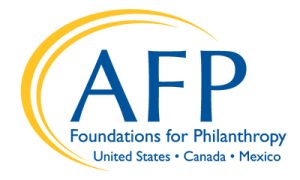Among the priorities for President-Elect Donald Trump once he’s inaugurated on Jan. 20 has been repeal or replacement of the Affordable Care Act (ACA), which would mean huge changes, as well as tax reform, particularly aimed at lowering corporate tax rates and those for high-income individuals. There’s also the typical concern for charities that cuts in federal funding will hit social services.
There are other financial issues not yet on the radar of many in the charitable sector who have staff immersed in the issues very concerned.
One federal funding source that might be on the chopping block is the Social Service Block Grant. The money goes to states for 29 social service categories. It was funded at $1.5 billion for fiscal 2015, down from $1.6 billion in 2013. It was launched in 1981 by President Ronald Reagan and funded at $2.8 billion.
It has been chipped away at almost every year, according to Jack Peterson, associate legislative director, human services and education, for the National Association of Counties. The amount was permanently reduced to $1.6 billion in 2001.
Speaker of the House Paul Ryan (RWisc.) tried to zero out the funding when he was chairman of the House Ways and Means Committee. Another attempt was made this year by Tom Price (R-Ga.), chair of the House Budget Committee, who is expected to be nominated as Secretary of Health and Human Services.
According to Peterson, money was taken to offset spending in other areas, in one case for an element of the ACA and in another case to surface transportation, which is unrelated to social services.
“It has been repeatedly threatened and is likely to be eliminated,” according to Donna Butts, president and CEO of Generations United in Washington, D.C. The challenge is transparency. A lack of reporting back to the federal government makes results “tougher to quantify and protect,” she said.
The federal money funds intergenerational programs such as aging, children, mental health, “not a core advocacy constituency,” she said.
If the funding is cut, Peterson said a survey of county officials whose programs use the money showed it would bring about across-the-board cuts that impact staffing, case workers who are the boots on the ground for social service programs.
Butts is also concerned about potential changes at the Social Security Administration. Any reform “that does not take into consideration it is a family support, not just retirement program, and that it currently covers almost every child and youth in the country” would be troubling, she said.
Elimination of funding coupled with changes to the tax code that could eliminate the benefits of a charitable tax deduction is a one-two punch on the state level. Trump has been quoted as saying taxpayers who currently deduct giving at the 39.6 percent rate will see that cut to 33 percent but will limit deductions to $200,000 per couple.
An example of a tax change can be seen in Michigan. The state repealed charitable tax credits to community foundations, homeless shelters and food banks effective with the 2012 tax year. The Council of Michigan Foundations (CMF) contracted the Johnson Center at Grand Valley State University to survey community foundations to determine the impact to their donations. The survey asked about changes in the number of $200 and $400 donations, the amounts that would trigger the maximum tax credit, according to Joan Bowman, external affairs officer of the Michigan Nonprofit Association.
There was a major change in donation patterns. The average amount of $200 and $400 donations decreased significantly — 76 percent in $400 donations and 44 percent in $200 donations. Particularly quickly vanishing was first-time donors — 84 percent at the $400 level and 37.5 percent decline at the $200 level.
The legislature in Hawaii tried to close a budget deficit on the backs of nonprofits by capping itemized deductions starting in 2012 at $25,000 for individual adjusted gross income of $100,000; $50,000 per couple with an adjusted gross income of $200,000. According to a report by Common Good, total giving reported as itemized deductions increased but at a pace of nearly 5.5 percent less the national average in a recovering economy. But the numbers dropped from 2012 to 2013, $626 million to $609 million.
“Frankly, there are not a lot of people in Washington who are actively advocating around tax policies that benefit lower and middle income people. That’s a role that the nonprofit sector can really play,” said Steve Taylor, senior vice president of public policy at United Way Worldwide (UWW). The best mechanism to deliver tax relief to middle class and working poor is the Earned Income Tax Credit (EITC) and Child Tax Credit, he said.
Taylor was optimistic after early comments by Steve Mnuchin, shortly after his nomination to be the next Treasury Secretary was announced, that there will be a significant middle class tax cut. Mnuchin’s comments signal that “the administration and GOP generally are going to have to be looking for the kinds of things they can do in taxes that will constitute a middle class tax cut,” Taylor said. “That really constitutes a huge opportunity for nonprofits because a lot of nonprofits are sort of connected to the middle class,” he said. United Way and many other high-profile charities such as The Salvation Army, YMCA and American Red Cross, benefit from the generosity of people in the middle class.
What the sector should be doing is looking for ways to talk to the administration about tax policies that can benefit the middle class. For instance, about two-thirds of middle-class workers don’t itemize their income taxes, which means they do not get a complete deduction for charitable contributions. “Lots of them are making donations anyway. It would provide some tax relief to claim deductions,” he said.
Another area of tax relief is a subject that Trump already mentioned to the campaign: child care tax credits. “We think Trump was really on to something during the campaign when he talked about child care as an issue for the middle class and working class. There’s definitely some opportunity there,” he said.
Existing tax proposals in the Republican-controlled House are not focused on the middle class. What’s troubling to Taylor about some of the Republican proposals on tax policy as it relates to charitable giving is that they draw a causational line between tax cuts and increases in charitable giving simply as a result of tax cuts.
“There is a correlation between a strong economy and charitable giving but some lawmakers are making a big leap between tax cuts and charitable giving. In fact, we know for certain there’s a causational link between charitable giving and tax incentives,” he said. The challenge will be to persuade those lawmakers that facilitating charitable giving really needs to be in the form of stronger tax incentives.
The threatened overhaul at the Internal Revenue Service (IRS) will also have consequences for tax-exempt organizations, said Robert Waldman, an attorney and chair of the Business Division of Venable LLP. Enforcement will fall to state regulators where the emphasis will be on transparency and the donor pool.
“Have their house in order” when it comes to operations is what he is advising clients. “We are really preaching to them lessons learned from Clinton Foundation/Trump Foundation stories,” said Waldman. In both cases media accounts of sullied donations, misuse of funds and lack of correct fillings with state and federal agencies were brought to light.
The IRS’s budget has been cut every year since 2010. Audits of tax-exempt organizations have plummeted since a high of 11,699 in FY 2011 to 6,392 for FY 2015, according to IRS statistics. That’s 0.81 percent of returns processed in FY 2015. From FY 2006 until FY 2015, the largest percentage of audits versus returns processed was 1.47 percent in FY 2010.
The transparency is both on a regulatory side, for donors and for gift acceptance, he said. “The whole world of charities has become so much more transparent. It’s not whether it’s a political donor you might not want to be associated with or a donation that is in consistent with the purposes of an organization,” Waldman said.
He cited an example of a donor giving to a hospital for research but a string attached to the gift is that a relative of the donor is doing the research. “In the past the hospital might have taken it,” said Waldman. Now there is consideration as to whether the organization would be embarrassed if the nature of some of the gift conditions came to light.
The president-elect’s plans to invest in public infrastructure might not sound like something for nonprofits to be concerned with — except that such a program could be a vehicle for other sorts of things, if you can make a case that they’re related to infrastructure, Taylor said. There may not be a lot of nonprofits advocating around fixing potholes but a lot of nonprofits have a real interest in better-paying jobs, something an infrastructure bill could contribute.
“Everyone in the sector ought to be looking for opportunities even if it may not jump out at them as an obvious vehicle for nonprofit sector work,” Taylor said. “It might sound like a stretch but you have to be creative.”
The election results also will bring changes at the state level. California Attorney General Kamala Harris won election to the U.S. Senate seat held by the retiring Barbara Boxer (D-Calif.). Gov. Jerry Brown appointed as her successor Congressman Xavier Becerra, a Democrat representing part of Los Angeles for the past 24 years who would be the state’s first Latino attorney general.
Harris has been a leader in the litigation and appeals in California and New York regarding regulator demands that nonprofits provide Schedule B of their Internal Revenue Service (IRS) Form 990. Schedule B identifies major donors, however, it is not part of the document made public by the IRS.
Critics have questioned the need for states to collect the information as well as their ability to keep it confidential. State charity officials in New York and California have countered that the information can help identify fraud or abuse. There was no immediate word on Becerra’s position on the issue.











